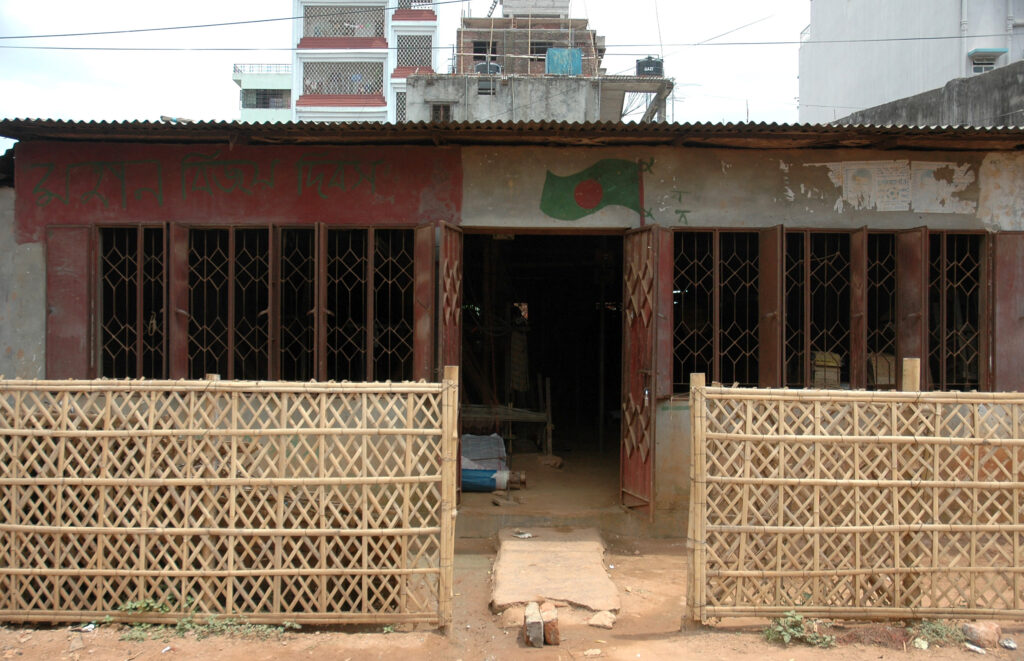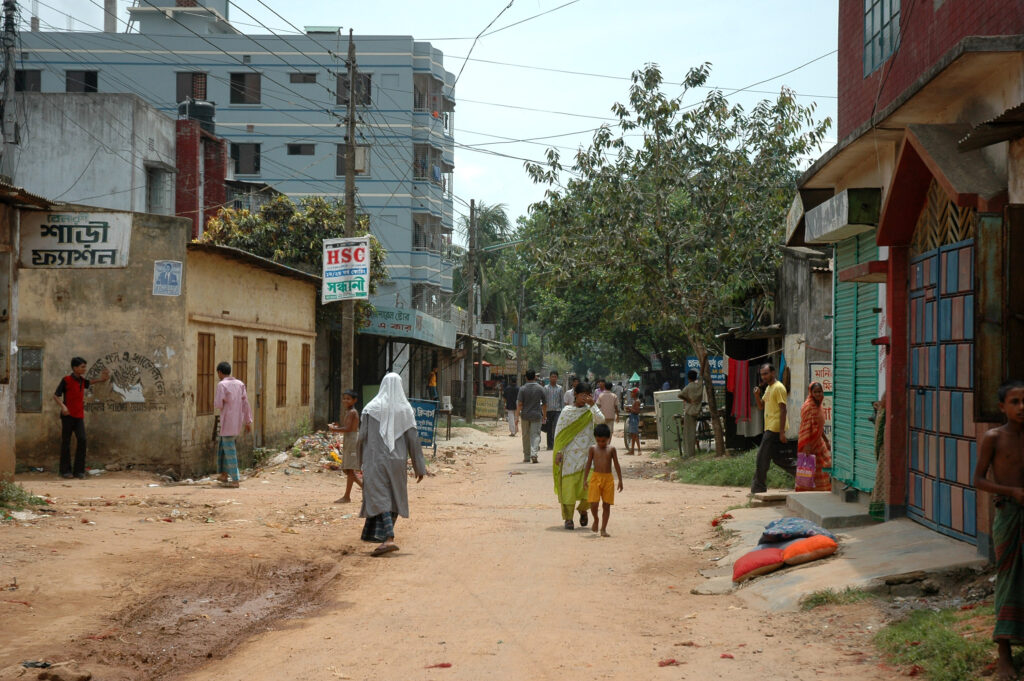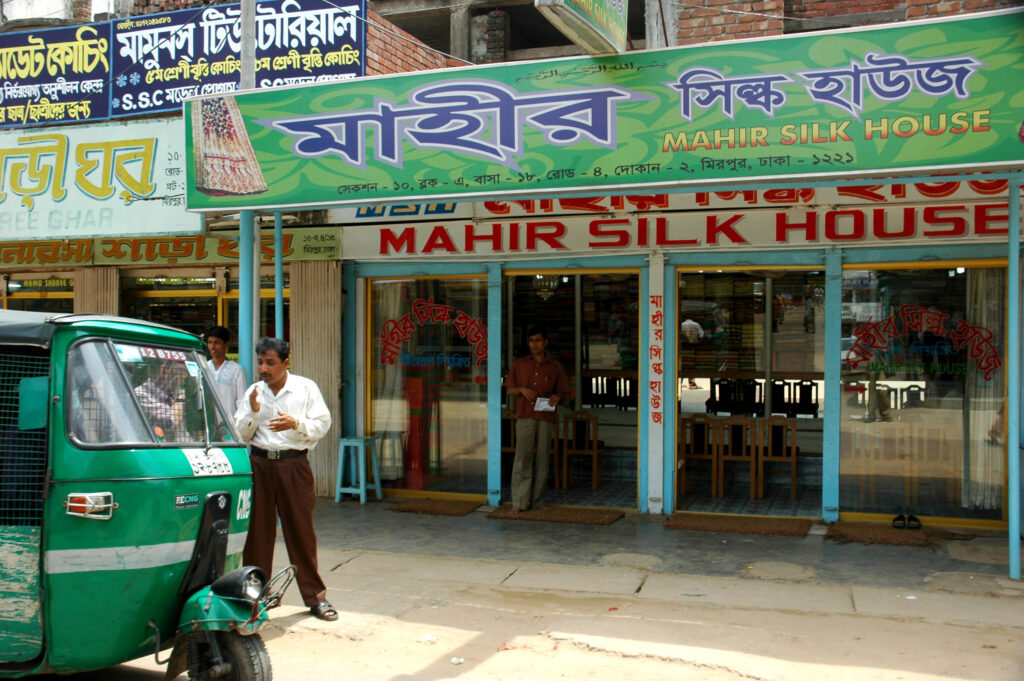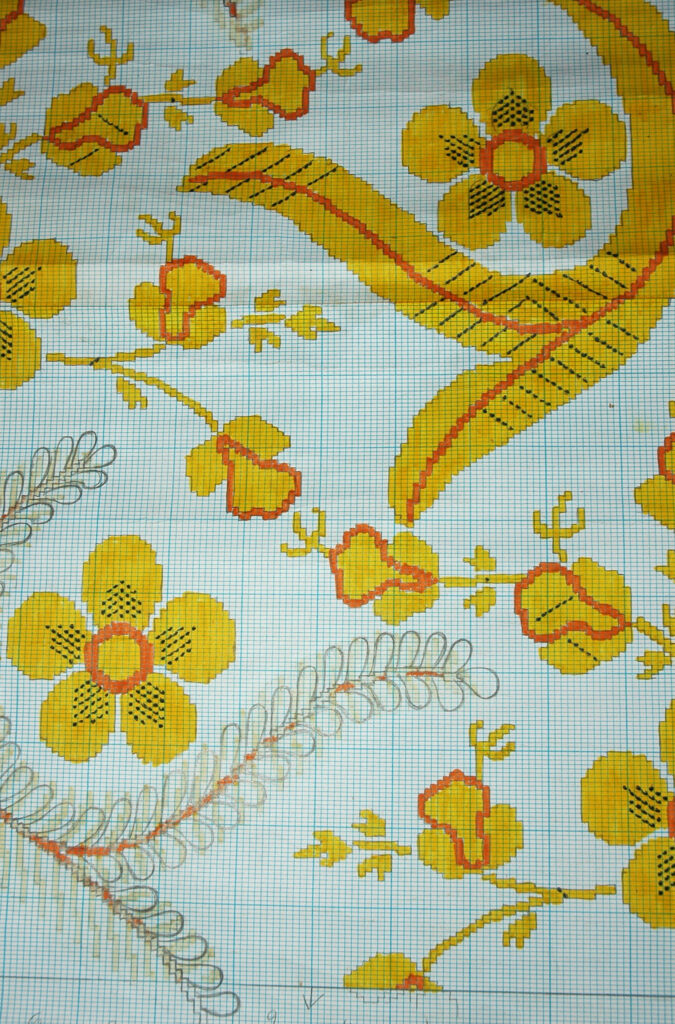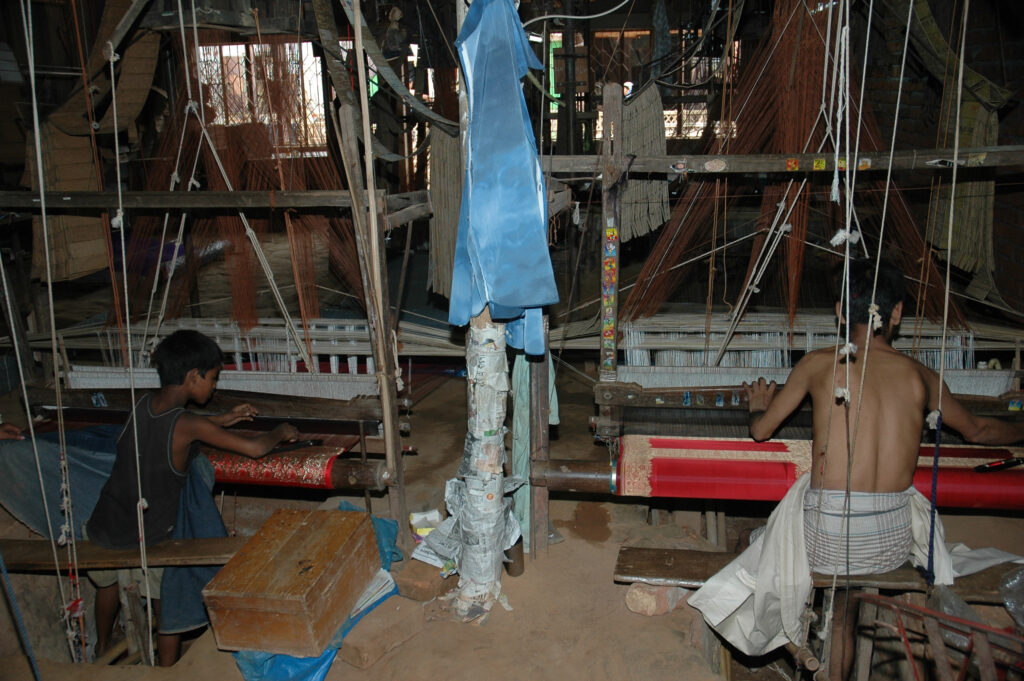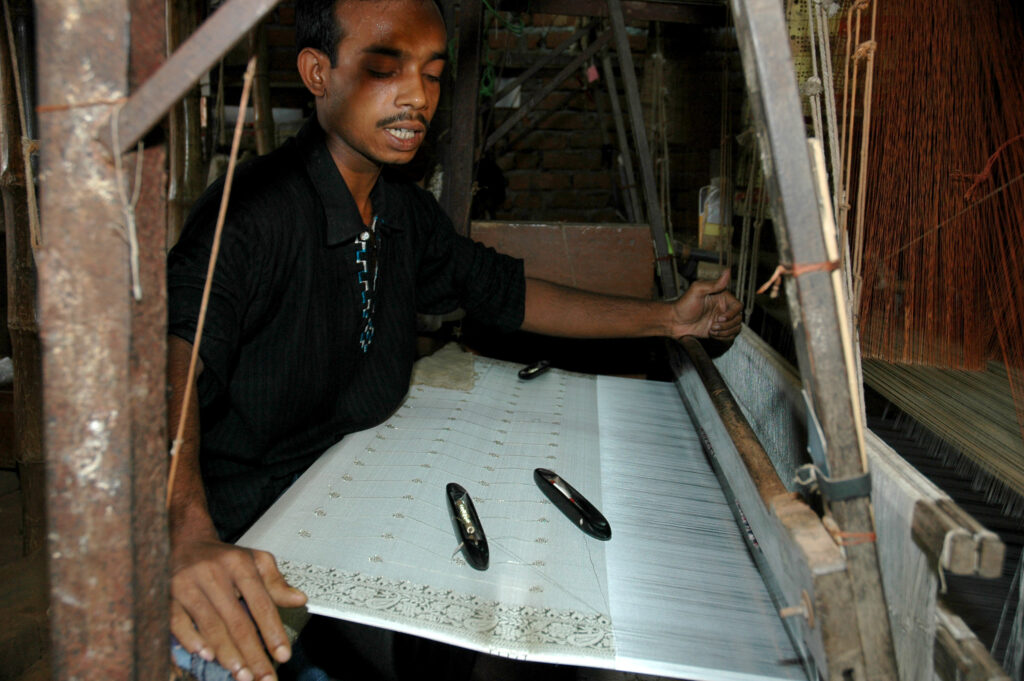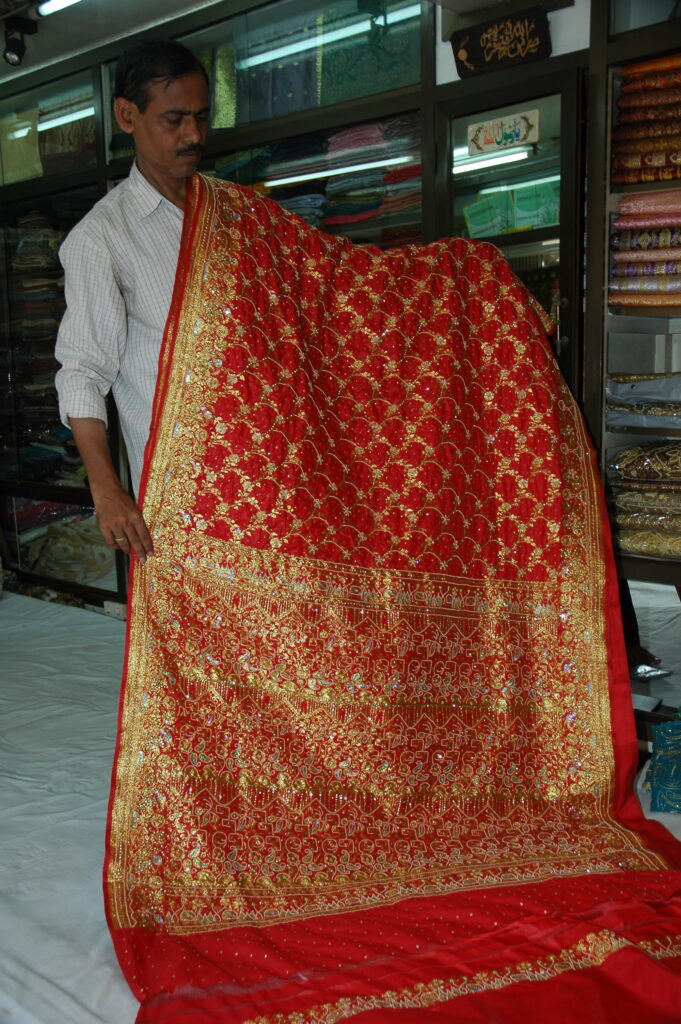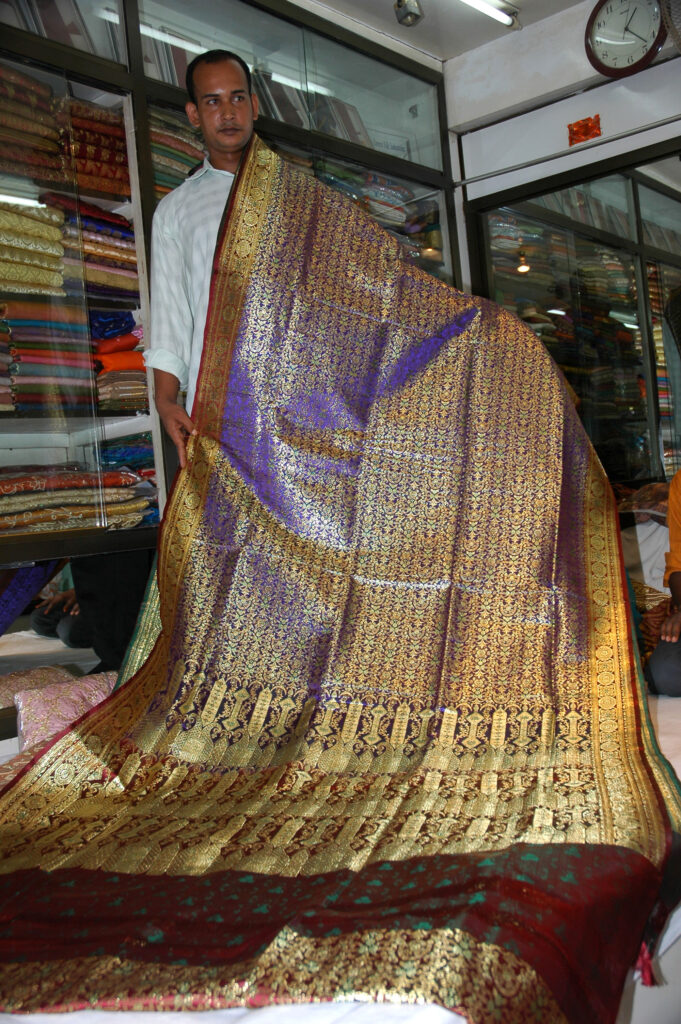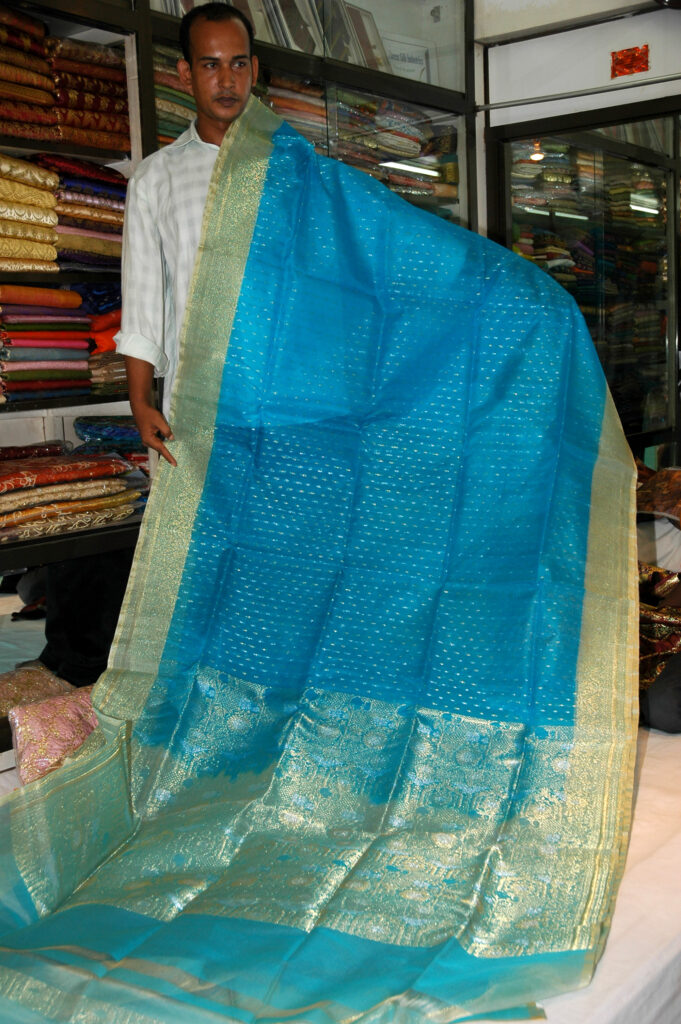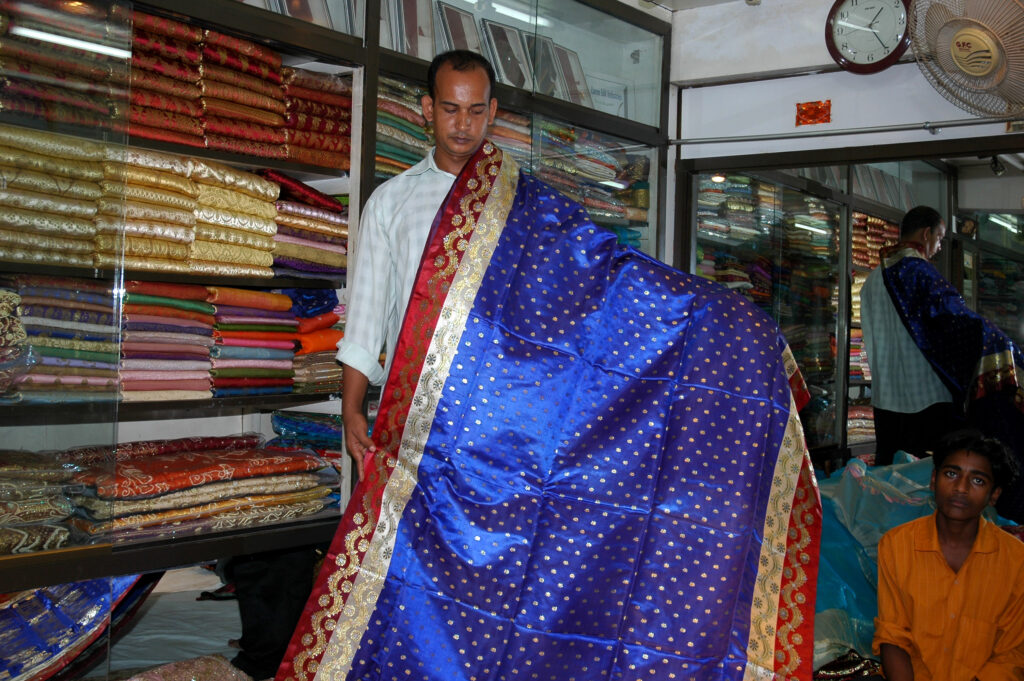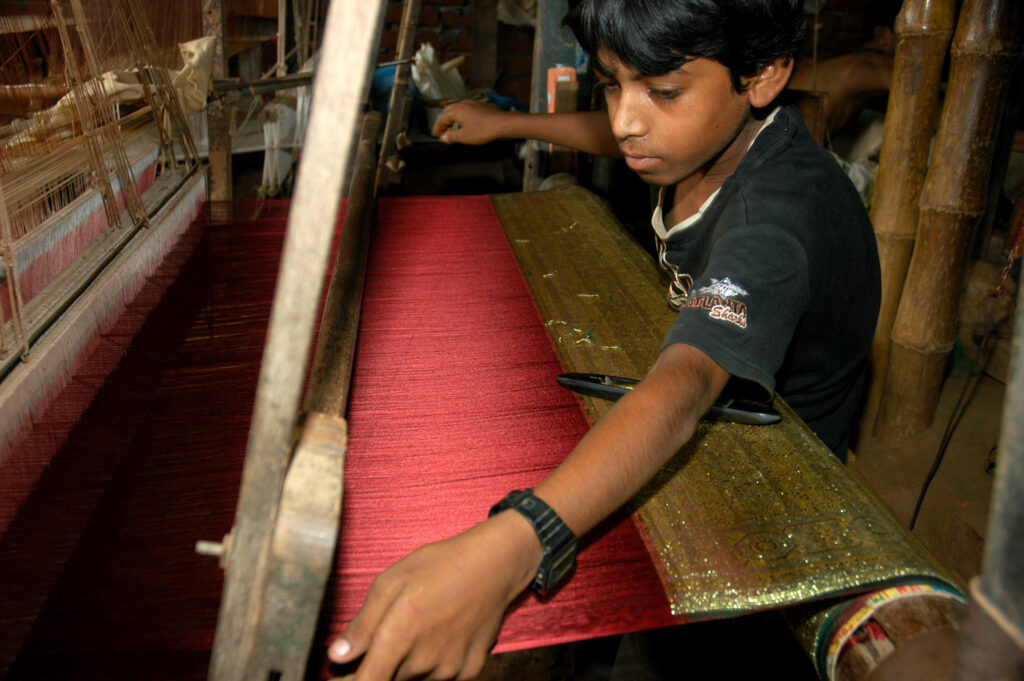
Mirpur in Dhaka has become the centre of Benarasi saree production in Bangladesh, established by Behari Muslim immigrants, who came to Bangladesh after India was partitioned in 1947. Although the art of Benarasi saree production was an ancient tradition of Benaras in India, the Dhakai Benarasi has been developed further and now, according to weavers and shop keepers, it has established its own unique identity.
Dhakai Benarasi is made from thread and golden-silver yarn imported from China, Japan and Pakistan and according to those involved in the industry, it is of superior quality in terms of its brightness and longevity.
About 5,000 weavers are said to work in about 10,000 looms in workshops situated within sections 10 to 12 of Mirpur. There are about 150 showrooms, linked to specific workshops where customers are welcomed to look through the wide range of Benarasi saris. Besides, several design masters are working on innovative saree designs. The task of weaving a Benarasi saree requires at least a week but the time may extend depending on its design.
The workers work for at least 12 hours per day from eight in the morning with a small lunch break. Wages of the weavers range between Tk 800-Tk 3,000 per month (£8-30) and depends on the designs of the sarees. The weavers are given designs by the owners of showrooms who weave sarees for them.
The Benarasi sarees require meticulous craftsmanship. The karigars (craftsmen), who compose the main design and their associates (commonly known as the helpers) put in considerable effort to give the customers the exquisite finished product. The artistry of Benarasi lies, particularly, in its design. However, there is no certain formula for exclusive designs. Although there has been a gradual increase in the number of Bengalis involved in the trade, the majority of the weavers and traders in Mirpur still trace their origin to Behar in India.
